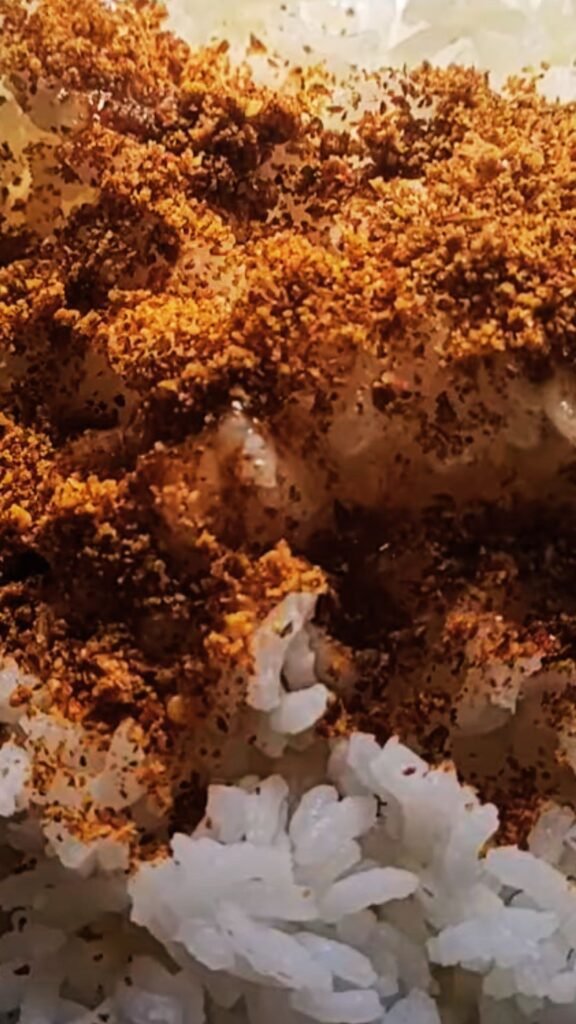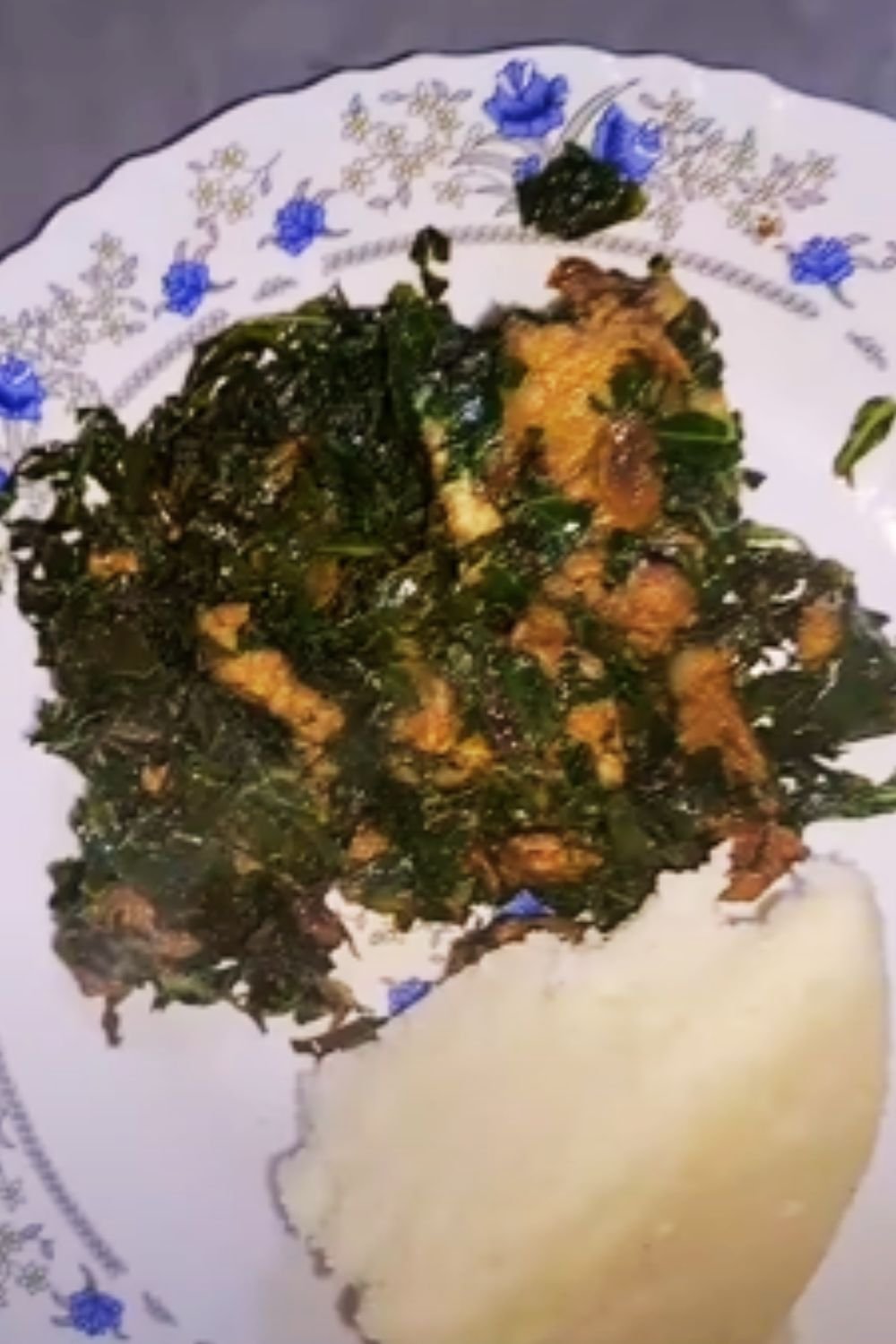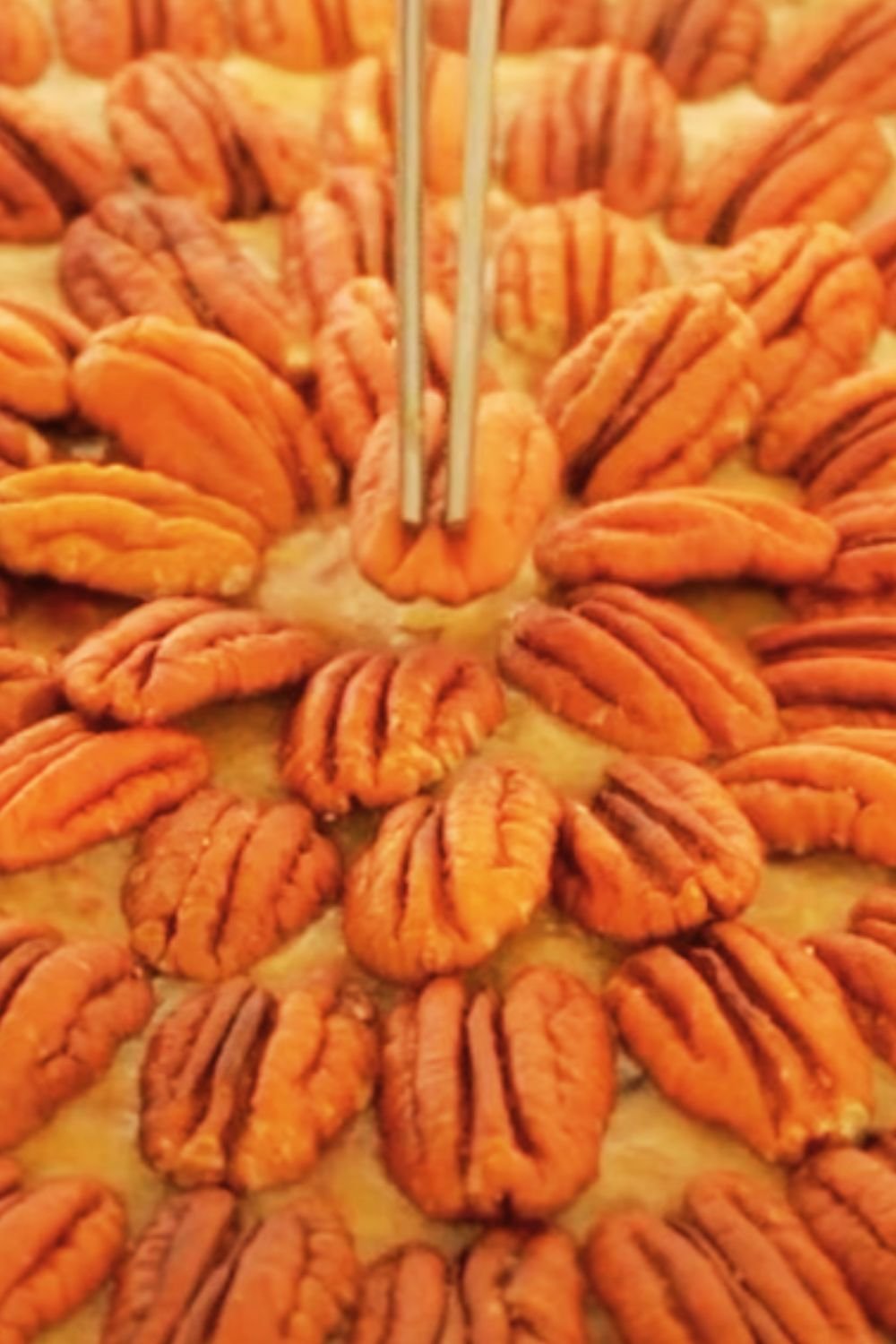There’s something magical about the way traditional South Indian podis transform simple meals into flavorful experiences. Today, I’m excited to share with you my favorite flax seed podi recipe – a nutritious twist on the classic podi that has become a staple in my kitchen. This Alli Virai Powder, as it’s known in Tamil, combines the nutty richness of flax seeds with aromatic spices to create a versatile condiment that elevates everything from plain rice to crispy dosas.
I discovered this recipe during my exploration of healthy South Indian cuisine, and it quickly became my go-to solution for adding both nutrition and flavor to meals. What makes this podi special isn’t just its incredible taste – it’s packed with omega-3 fatty acids, fiber, and essential nutrients that make every meal a little more wholesome.
Understanding Flax Seed Podi
Flax Seed Podi is a dry spice powder made primarily from roasted flax seeds combined with traditional South Indian spices like red chilies, urad dal, and curry leaves. This condiment belongs to the family of podis – dry chutneys that are essential components of South Indian cuisine.
Alli Virai is the Tamil name for flax seeds, literally translating to “sesame-like seeds.” The term “podi” means powder, making this a straightforward description of what this condiment actually is – a flavorful powder made from flax seeds.
Nutritional Powerhouse describes this podi perfectly, as flax seeds are among the richest plant-based sources of omega-3 fatty acids, lignans, and dietary fiber.
Why I Love Making Flax Seed Podi
My journey with flax seed podi began when I was looking for ways to incorporate more healthy fats into my family’s diet without compromising on taste. Traditional podis are already fantastic, but adding flax seeds takes them to another level nutritionally.
What I appreciate most about this recipe is its versatility. I can sprinkle it on rice with a drizzle of ghee for a quick meal, use it as a filling for dosas, or even mix it with yogurt for a protein-rich side dish. The nutty flavor of flax seeds pairs beautifully with the heat from red chilies and the earthiness of curry leaves.
Essential Ingredients for Perfect Flax Seed Podi
Creating the perfect flax seed podi requires carefully selected ingredients. Here’s what I use in my kitchen:
Primary Ingredients:
- Flax seeds (Alli Virai) – 1 cup
- Red chilies – 8-10 pieces
- Urad dal – 2 tablespoons
- Chana dal – 1 tablespoon
- Curry leaves – 2 sprigs
- Asafoetida (Hing) – 1/4 teaspoon
- Salt – 1 teaspoon (or to taste)
Optional Flavor Enhancers:
- Sesame seeds – 1 tablespoon
- Coriander seeds – 1 teaspoon
- Garlic cloves – 2-3 pieces
- Tamarind – small piece
Detailed Nutritional Information
| Nutrient | Per 100g Serving | Daily Value % |
|---|---|---|
| Calories | 534 kcal | 27% |
| Protein | 18.3g | 37% |
| Total Fat | 42.2g | 65% |
| Omega-3 Fatty Acids | 22.8g | 1425% |
| Dietary Fiber | 27.3g | 109% |
| Calcium | 255mg | 26% |
| Iron | 5.7mg | 32% |
| Magnesium | 392mg | 98% |
| Phosphorus | 642mg | 64% |
| Potassium | 813mg | 23% |
| Zinc | 4.3mg | 29% |
Step-by-Step Preparation Method
Preparation Phase
I always start by organizing my ingredients and preparing my workspace. This makes the entire process smoother and ensures I don’t miss any steps.
- Cleaning the Flax Seeds: I carefully pick through the flax seeds to remove any debris or damaged seeds. Then I rinse them gently in a fine-mesh strainer and pat them dry with a clean kitchen towel.
- Preparing Spices: I remove stems from the red chilies and break them into smaller pieces. The curry leaves are cleaned and patted dry to prevent oil splatter during roasting.
- Setting up Equipment: I keep my heavy-bottomed pan ready for roasting and ensure my spice grinder or food processor is clean and dry.
Roasting Process
The roasting process is crucial for developing the deep, complex flavors that make this podi irresistible.
Roasting the Dals: I start by dry roasting the urad dal and chana dal in a heavy-bottomed pan over medium heat. I stir constantly until they turn golden brown and emit a nutty aroma – this usually takes about 3-4 minutes. I transfer them to a plate and set aside to cool.
Roasting Red Chilies: In the same pan, I roast the red chilies for about 2 minutes until they become crisp and slightly darker. I’m careful not to burn them as this would make the podi bitter.
Roasting Curry Leaves: Next, I add the curry leaves and roast them until they become crispy – about 1-2 minutes. They should crumble easily when touched.
Roasting Flax Seeds: This is the most important step. I roast the flax seeds over medium-low heat, stirring continuously. The seeds are ready when they start to pop and emit a nutty aroma – this takes about 5-7 minutes. I’m very careful not to over-roast them as they can become bitter.

Grinding and Final Preparation
Once all ingredients are roasted and cooled completely, I proceed with grinding:
- First Grind: I add the roasted dals, red chilies, and curry leaves to my spice grinder and pulse until they form a coarse powder.
- Adding Flax Seeds: I add the roasted flax seeds gradually while grinding. Flax seeds can release oils if over-processed, so I pulse in short bursts.
- Seasoning: I add salt and asafoetida, then give a final pulse to mix everything evenly.
- Consistency Check: The final podi should have a coarse texture – not too fine like a powder, but not too chunky either.
Storage and Shelf Life
Proper storage is essential for maintaining the freshness and nutritional value of flax seed podi.
| Storage Method | Container Type | Shelf Life | Notes |
|---|---|---|---|
| Room Temperature | Airtight glass jar | 2-3 weeks | Store in cool, dry place |
| Refrigerator | Airtight container | 2-3 months | Best for maintaining nutrition |
| Freezer | Freezer-safe container | 6 months | Portion into small containers |
I always store my flax seed podi in small glass jars in the refrigerator. This prevents the oils in flax seeds from going rancid and maintains the crispiness of the roasted ingredients. I make sure the container is completely airtight to prevent moisture absorption.
Serving Suggestions and Pairings
The versatility of flax seed podi is what makes it such a valuable addition to my pantry. Here are my favorite ways to serve it:
Traditional Pairings:
- Mixed with hot rice and ghee for a simple, nutritious meal
- Sprinkled over dosas or uttapams as a flavorful filling
- Combined with idli or steamed rice cakes
- Mixed with curd rice for added protein and flavor
Creative Applications:
- As a seasoning for roasted vegetables
- Mixed into yogurt for a healthy dip
- Sprinkled over salads for a nutty crunch
- As a coating for grilled paneer or tofu
Breakfast Ideas:
- Mixed with warm milk and a touch of jaggery
- Sprinkled over upma or poha
- As a topping for South Indian breakfast items
Health Benefits and Nutritional Advantages
My interest in flax seed podi goes beyond its taste – the health benefits are remarkable and well-documented.
Omega-3 Fatty Acids: Flax seeds are one of the richest plant-based sources of alpha-linolenic acid (ALA), an essential omega-3 fatty acid. This supports heart health, reduces inflammation, and may help with brain function.
Digestive Health: The high fiber content promotes healthy digestion and helps maintain stable blood sugar levels. I’ve noticed improved digestion since I started including this podi in my regular meals.
Hormonal Balance: Flax seeds contain lignans, which are phytoestrogens that may help balance hormones, particularly beneficial for women’s health.
Heart Health: The combination of omega-3s, fiber, and plant compounds supports cardiovascular health by helping to lower cholesterol levels and reduce blood pressure.
Variations and Regional Adaptations
Over the years, I’ve experimented with various regional adaptations of this basic recipe:
Andhra Style: I add extra red chilies and a pinch of turmeric for heat and color.
Karnataka Version: Including sesame seeds and groundnuts creates a richer, nuttier flavor profile.
Tamil Nadu Adaptation: Adding a small piece of tamarind gives a subtle tanginess that balances the nutty flavors.
Protein-Rich Version: I sometimes add roasted peanuts or almonds for extra protein and richness.
Troubleshooting Common Issues
| Problem | Cause | Solution |
|---|---|---|
| Bitter taste | Over-roasted flax seeds | Roast on medium-low heat, watch carefully |
| Oily texture | Over-grinding flax seeds | Pulse in short bursts, avoid continuous grinding |
| Lacks flavor | Under-roasted ingredients | Ensure proper roasting until aromatic |
| Short shelf life | Moisture contamination | Store in airtight containers, ensure complete cooling |
| Clumpy texture | Grinding while warm | Cool completely before grinding |
Tips for Perfect Results
Through my years of making this podi, I’ve learned several tricks that ensure consistent results:
- Quality Matters: I always use fresh, high-quality flax seeds. Old or rancid seeds will ruin the entire batch.
- Roasting Temperature: Medium to medium-low heat is crucial. High heat burns the delicate flax seeds.
- Cooling Time: I never rush the cooling process. Grinding warm ingredients creates moisture, which reduces shelf life.
- Grinding Technique: I pulse rather than continuously grind to prevent the oils from being released too much.
- Taste Testing: I always taste and adjust seasoning before final storage.
Frequently Asked Questions
Q: Can I substitute flax seeds with other seeds? While you can experiment with chia seeds or sesame seeds, the nutritional profile and flavor will be different. Flax seeds have a unique nutty taste and omega-3 content that’s hard to replicate.
Q: How do I know if my flax seeds are fresh? Fresh flax seeds should have a mild, nutty aroma and a glossy appearance. Rancid flax seeds smell fishy or bitter and should be discarded.
Q: Can I make this podi without oil? This recipe doesn’t require any added oil – the natural oils in flax seeds provide enough richness. The dry roasting method I use is completely oil-free.
Q: Is this podi suitable for people with nut allergies? Yes, flax seeds are not tree nuts, so this podi is generally safe for people with tree nut allergies. However, always check with your healthcare provider if you have severe allergies.
Q: How much flax seed podi should I consume daily? I recommend 1-2 tablespoons per day. This provides a good amount of omega-3s without overdoing the calorie intake.
Q: Can diabetics consume this podi? Yes, flax seeds may actually help with blood sugar control due to their high fiber content. However, diabetics should consult their healthcare provider about incorporating new foods into their diet.
Q: Why does my podi become soggy quickly? This usually happens due to moisture absorption. Make sure your storage container is completely airtight and that the podi is completely cooled before storing.
Q: Can I grind large batches at once? I prefer making smaller batches to ensure freshness. Large batches are harder to store properly and may lose their flavor and nutritional value more quickly.
Q: What’s the best time of day to consume flax seed podi? I personally enjoy it with breakfast as it provides sustained energy throughout the morning. However, it can be consumed at any time of day.
Q: Can pregnant women consume flax seed podi? Flax seeds are generally considered safe during pregnancy in moderate amounts, but it’s always best to consult with a healthcare provider about dietary additions during pregnancy.
This flax seed podi has become such an integral part of my cooking that I can’t imagine my pantry without it. The combination of nutrition, flavor, and versatility makes it a true winner in my book. Whether you’re looking to boost your omega-3 intake, add more fiber to your diet, or simply want to explore new flavors, this recipe is definitely worth trying. I hope you enjoy making and eating this nutritious podi as much as I do!

